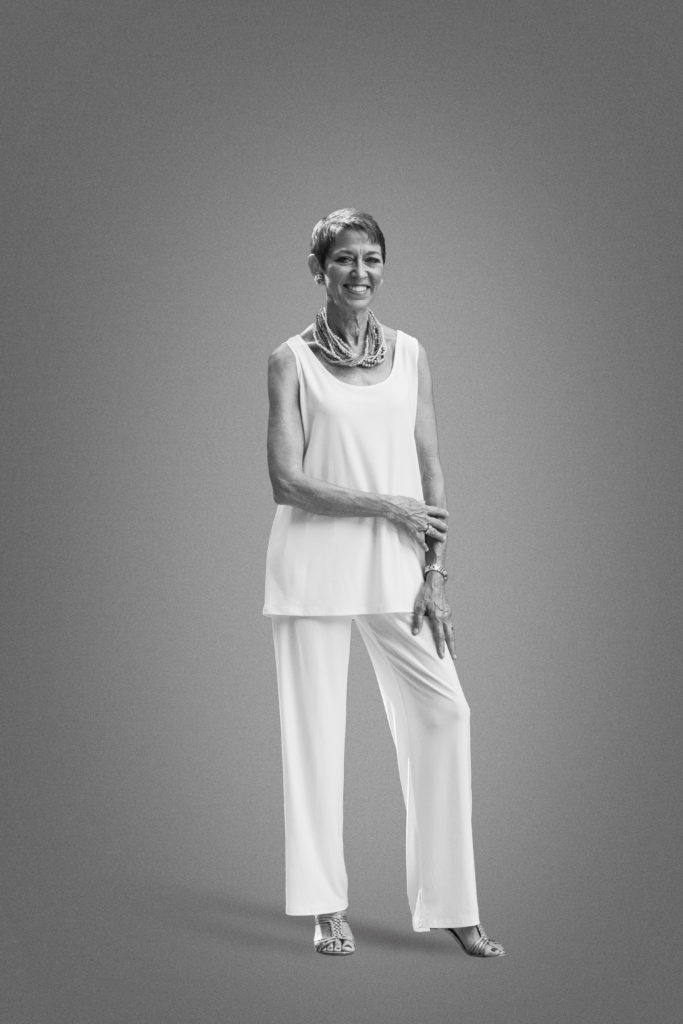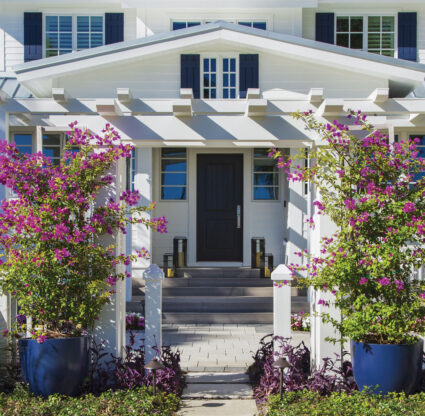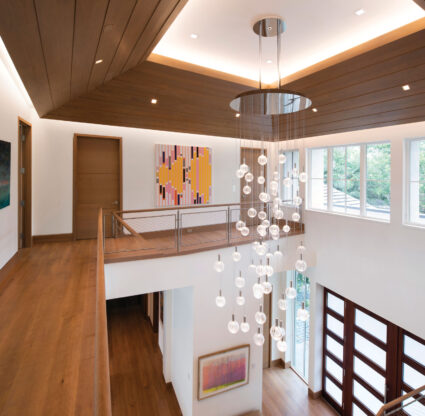In her 36-year career in Naples, the late architect Andrea Clark Brown touched many lives. METHOD & CONCEPT founder Chad Jensen credits her as one of the first people in town to acknowledge his innovative art and designs. Fort Myers sustainable architect Joyce Owens compares her to the great Frank Lloyd Wright for her ability to gracefully respond to the client, the environment and the function of a space. Naples’ architect David Corban—who is currently renovating the Sugden Community Theatre Clark Brown designed in 1998—applauds her ability to establish pivotal connections in the community and the industry. And her friend, longtime Naples designer Richard Geary, says she was the most intelligent and empathetic person he’s met in the field. This summer, we lost Clark Brown to a long battle with cancer, but her legacy lives on through her work, her peers and her family, including her husband, artist John Carroll Long, with whom she ran Up Art Contemporary Gallery in Old Naples.
The New York native (who also trained as a concert pianist) initially went to college in the ’70s to pursue acting. After hours spent building sets behind the scenes, she developed a love for architecture and graduated with a bachelor’s in city structures and planning from Bryn Mawr College in Pennsylvania. She earned her master’s in architecture from the University of Virginia School of Architecture in 1978. Just a year out of grad school, Clark Brown won the distinguished Rome Prize from the American Academy in Rome, where she learned the principles of great architecture. “That’s a huge deal,” Geary says. Throughout her early career, she worked for prestigious firms in New York, Pennsylvania and Virginia. And, she kept ties with universities around the country, teaching the next generation.
Clark Brown was a force in the industry, employing several local talents early in their careers and creating a portfolio of buildings throughout Southwest Florida to showcase her brilliant design ethos. She didn’t do cookie-cutter, romantic or builder-grade architecture. Her designs were intentional and innovative, with artful facades, contemporary landscapes and interiors that are equally artistic and functional.
She fell in love with Naples when designing her parents’ retirement home in the ’80s. In 1986, she launched Andrea Clark Brown Architects, P.A., becoming the first female architect to own a firm in Naples. “She was a very strong talent; she was a woman in a man’s world very early on down here,” architect David Corban says. Clark Brown’s knack for reinterpreting architectural principles and nuances changed the conversation. In the ’90s, when most Naples homes were punctuated by Mediterranean arches, ornate columns and crown molding, Clark Brown seamlessly blended ceilings to walls to floors, with no dust-trapping baseboards or trim work in sight. She used geometric forms to craft architectural feature walls and room dividers. She also had an artist’s touch with windows, creating picturesque vistas that overlooked private courtyards, gardens and ocean landscapes.
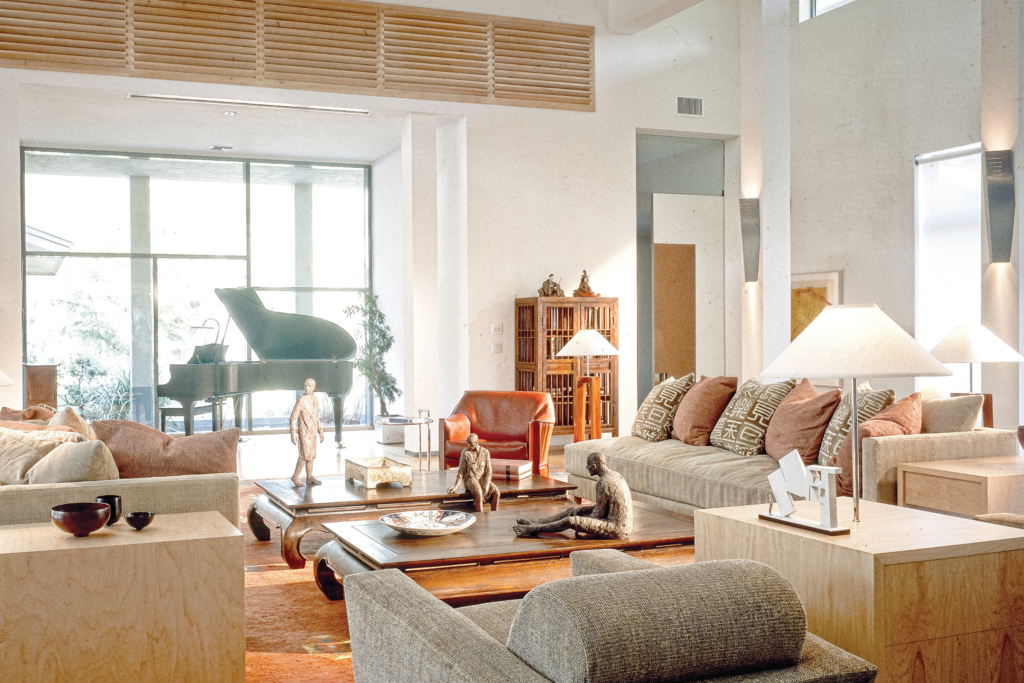
A respected designer and self-proclaimed architecture junkie, Geary recalls pulling Clark Brown in to help with a project for a progressive client living in Quail West. “We talked for hours about things like the floor touching the walls, hardware, how to work with the surrounding preserve,” Geary says. The home featured clerestory lights, decorative columns to break up spaces, a loft-like room and a dedicated space to showcase a piano (a heartfelt addition for Clark Brown, who was known to tickle the ivories at dinner parties or on nights at home with her husband). “For a designer to be so involved with an architect so imminently and having a very willing client was ideal. I’ve only had that situation a few times in my career,” Geary says. Thirty years later, listing agent Nita Rapp says the architecture still stands out in the community, with its reflection pools and private courtyards overlooking the preserve.
Her presence is all over Naples, from the modern, geometric stained glass windows at St. Agnes Catholic Church to the biophilic, bougainvillea-draped parking garages on Fifth Avenue South to the showpiece Butterfly House she reinvented in Lake Park to the stately Beach House she designed in tandem with architect David Poorman. A few months before she passed, Clark Brown shared a file with Gulfshore Life containing renderings for past, future and dreamt projects, including a fully solar project on Naples Bay that she coined Lookout House for the wall of windows that line the back of the home. Clark Brown used these conceptual creations to help her clients anticipate and participate in how they’d live in the spaces. And while each digital sketch, along with her completed projects, takes on a form of its own, they all convey a high level of design that’s uniquely Clark Brown. Joyce Owens—who became close friends with the architect after working for her in the ’90s—credits this cohesion to Clark Brown’s deep appreciation for architectural principles. Owens says the two bonded over their dedication to creating a sense of place and carrying the architectural design into the interiors, thinking beyond curb appeal and trending styles. “Everything she did was just exquisite,” Owens says. “She designed everything all the way through, and the buildings are holistic.”
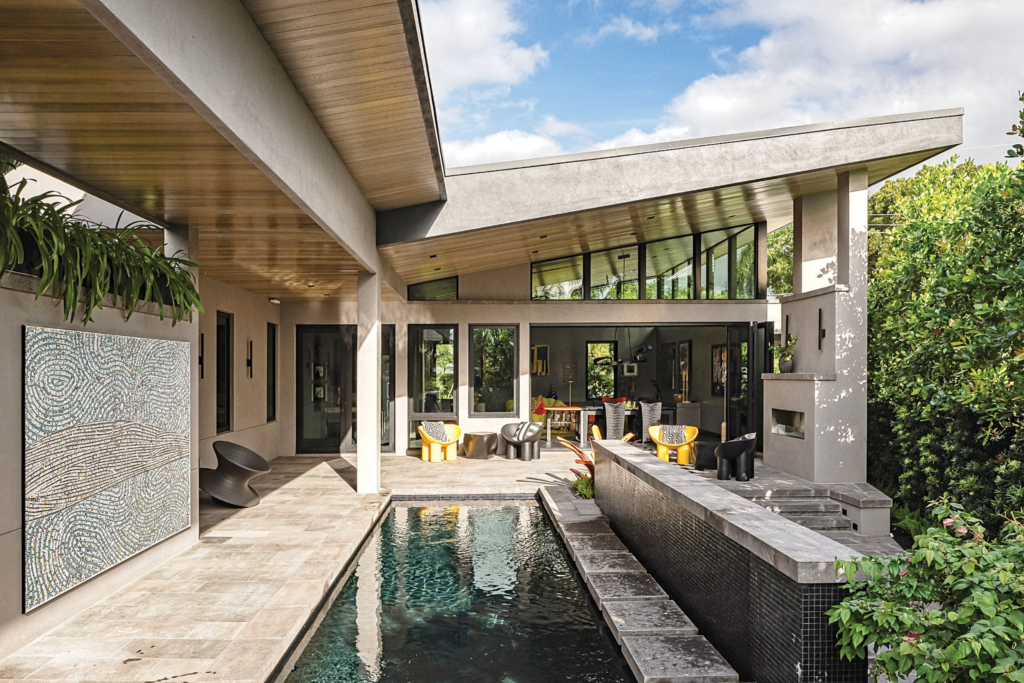
Clark Brown’s religious and commercial spaces hold equal weight in the community. “There are all these small pieces that contribute to the whole—the pews, the columns, the way that light comes in—its the way you move through the space,” Owens says. Clark Brown’s knack for modernizing ancient art forms, like stained glass, is exemplified in the seven Naples churches she designed (look at the tiny geometric pieces that appear to be woven into narrow window panes at St. Agnes Catholic Church). She evoked the region’s heritage with a boat-shaped bar at Swan River Seafood in Park Shore. And angular overhangs at Engel & Völkers Olde Naples real estate office on Fifth Avenue reflect the homes the company lists. Her work is seen prominently downtown, with her Romanesque, columnar design for The Naples Players’ Sugden Community Theatre—an iconic backdrop for marriage proposals (your writer’s included), holiday celebrations (find the towering Christmas tree lit on its steps each December) and visitors’ photo-ops.
David Corban, who was tapped nearly a decade ago to work on a $12 million renovation and expansion for the theater (currently in the works), points to her ability to reimagine classic architecture. The Baker Stage, he says, nods to Michaelangelo’s Piazza del Campidoglio with its oval format that tricks the eye, making the space feel like a circle when you stand in some spots. “If you look at an aerial map of the Piazza and The Baker Stage, you’ll see the similarities,” Corban says. “It’s like an abstracted version.” Corban worked for Clark Brown for four years early in his career. He made some of his greatest industry friends in her office and at a lecture series she ran with Florida’s chapter of the American Institute of Architects (AIA) in the ’90s to funnel national talent into the region (Clark Brown later passed the baton to Corban). “She changed the climate of design here,” Geary adds. “By bringing all of these people in and initiating the conversation, we moved out of what I call very provincial architecture into something a little bit more international. Her architecture spoke to a bigger audience.”
